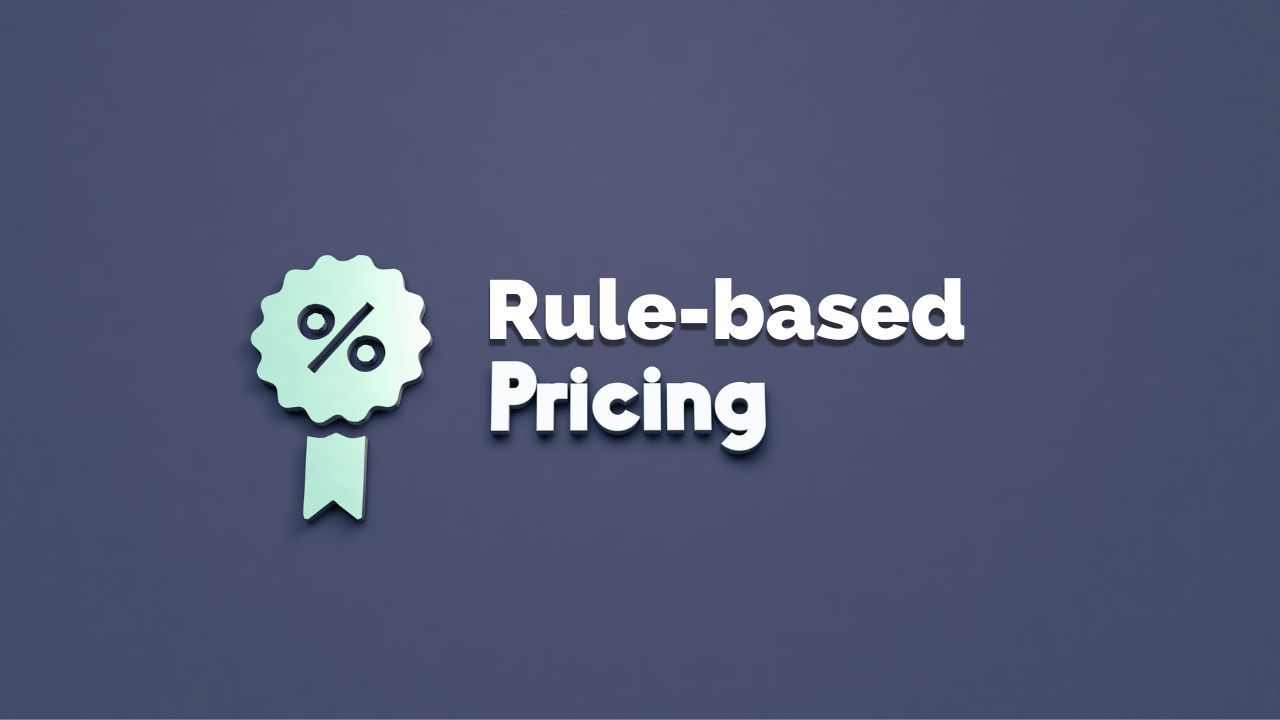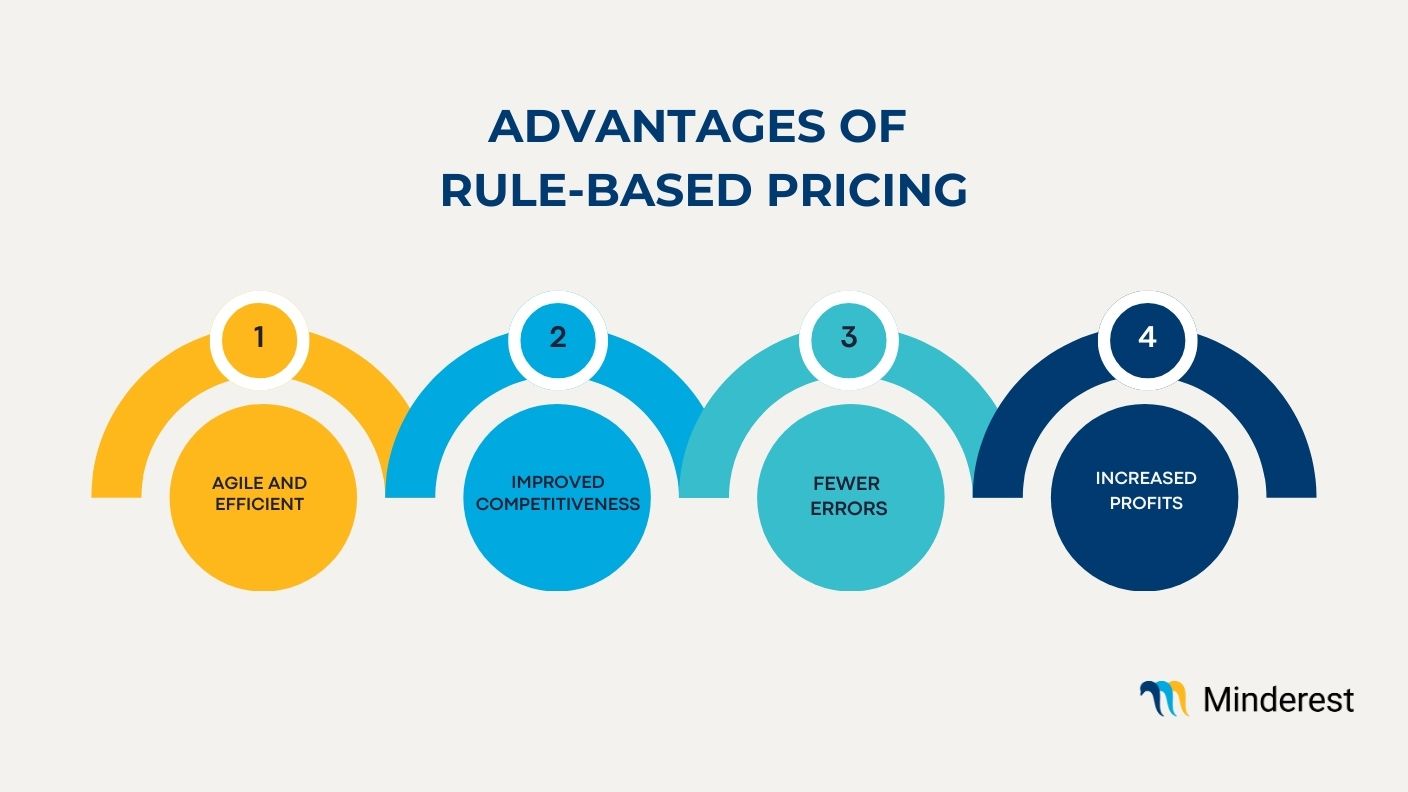

Rule-based pricing is now a key price management tool in the retail sector. Its automated abilities and adaptability make it worth its weight in gold for brands and distributors that want to improve their competitive positioning in the market. This article explains what rule-based pricing involves, its benefits and how to implement it successfully in your business using solutions like Minderest’s AI Price Intelligence tool.
What is rule-based pricing?
A rule-based pricing strategy makes it possible to set prices based on predefined rules or criteria. These rules may involve factors such as:
- Competitors’ prices.
- Production or acquisition costs.
- Target profit margin.
- Market demand.
- Seasonality or specific trends.
Unlike other strategies such as competitor-based pricing, or cost-plus pricing, rule-based pricing steps it up a notch and increases operational efficiency.
Instead of deciding the price of each product individually, this strategy makes agile changes possible based on predefined conditions, which saves time and reduces potential errors. For example, you could set a rule ensuring that specific products in your catalogue are always priced 5% below your competitors’ average, ensuring you achieve a minimum profit margin.
Advantages of rule-based pricing
Implementing rule-based pricing delivers the following benefits:
Agile and efficient
Presetting the parameters for pricing according to predefined rules means that your team have time to focus on other strategic activities. This also reduces the response time to market changes.
Improved competitiveness
With this strategy, you can react fast to your competitors’ moves, ensuring your prices remain competitive and attractive to your customers.
Fewer errors
By establishing clear rules, you minimize the risk of errors when repricing, ensuring that your price management is more precise and aligned with business objectives.
Increased turnover and profits
By optimizing your prices based on data and precise rules, you can maximize sales and profits, maintaining the delicate balance between volume and profitability.

How to define a rule-based pricing strategy
Follow these steps to implement a successful rule-based pricing strategy:
1. Analyze the current position
Before defining rules, review your current prices, costs attached to your products, your competitors’ positioning, and your price index. A tool like Minderest’s Price Intelligence can help you compile this information accurately and in real time.
2. Define your goals
Decide what you want to achieve with this strategy: Higher sales? Increase your profit margin? Position yourself as the low-price leader? Being clear about your goals will ensure that you define rules that align with your overall strategy.
3. Create precise and flexible rules
Make your rules clear but adaptable. For example:
- Adjust the price so that it always exceeds production costs by 10%.
- Match the price of the nearest competitor.
- Increase prices by 15% during seasonal peak demand.
4. Use repricing tools
Using specialized software is key to managing this strategy. Solutions like Minderest can help you define repricing rules, and monitor market movements, making sure that you always have the right price.
5. Constantly monitor and adjust prices
The market is dynamic, so you should periodically review your rules to make sure that they are still effective. Use up-to-date data, like data provided by Minderest, to reprice as necessary.
Practical example of rule-based pricing
Imagine that you run an electronics eCommerce, and you decide to implement rule-based pricing. One of your rules could be: “If a competitor reduces the price of a specific smartphone model, adjust my price so that it is 2% lower.” With this rule, you can remain competitive without having to monitor the prices of each product by hand.
Rule-based pricing is one of the most effective strategies to optimize price management in an ever-more competitive market. By setting rules based on data, you won’t just be more efficient but also increase your profitability and customer satisfaction.
At Minderest, we can help you implement this strategy simply and effectively with our Price Intelligence tool. Ready to take your pricing to the next level?
Find out how Minderest can take your business to the next level.
Contact our pricing experts to see the platform in action.
Related Articles

AI Agents and Holiday Season: How to Adapt Your Pricing Strategy
Holiday season planning used to revolve around creative campaigns, emotional storytelling, and optimizing the user experience. However, a silent revolution is changing the rules of the game. The rise...
How Surveillance Pricing Works and Its Applications for Your Business
The term "Surveillance Pricing" might conjure images of corporate espionage and price manipulation. However, this initial perception hides one of the most sophisticated and powerful strategies in...